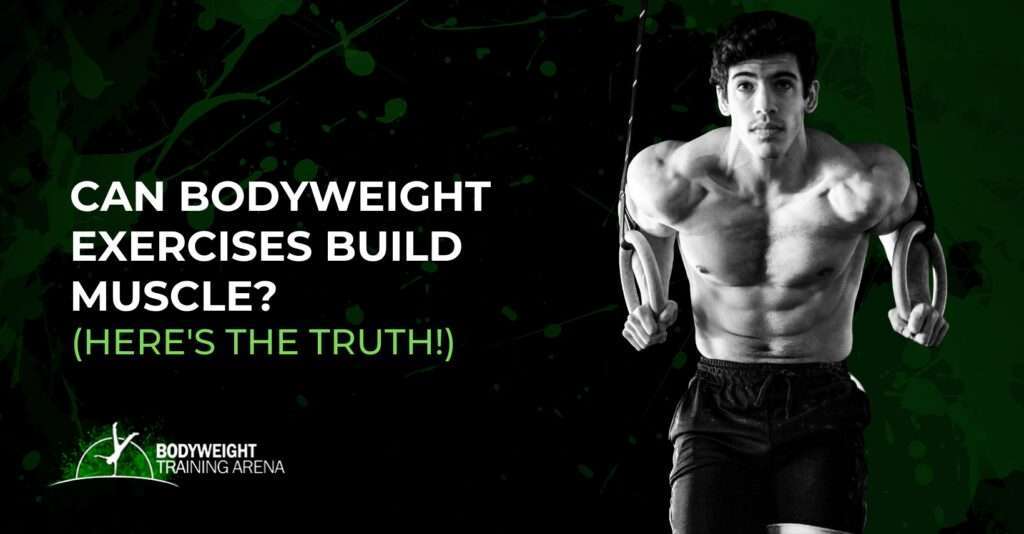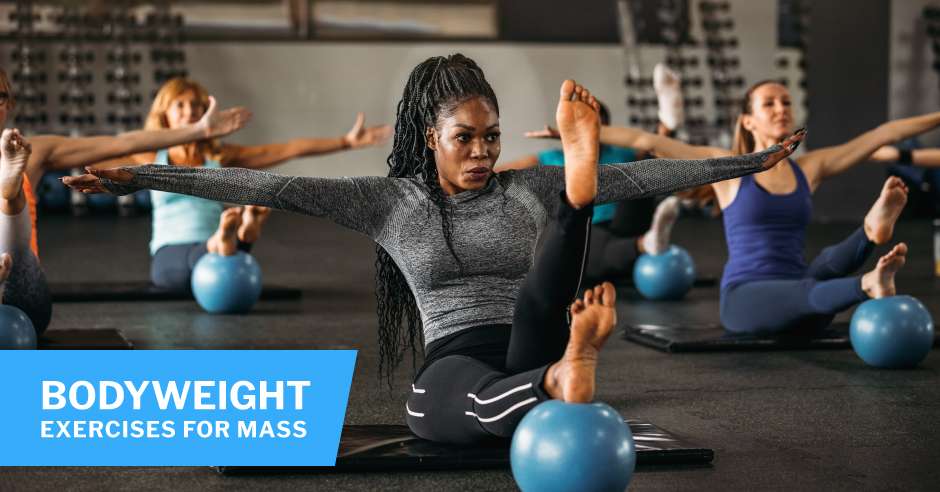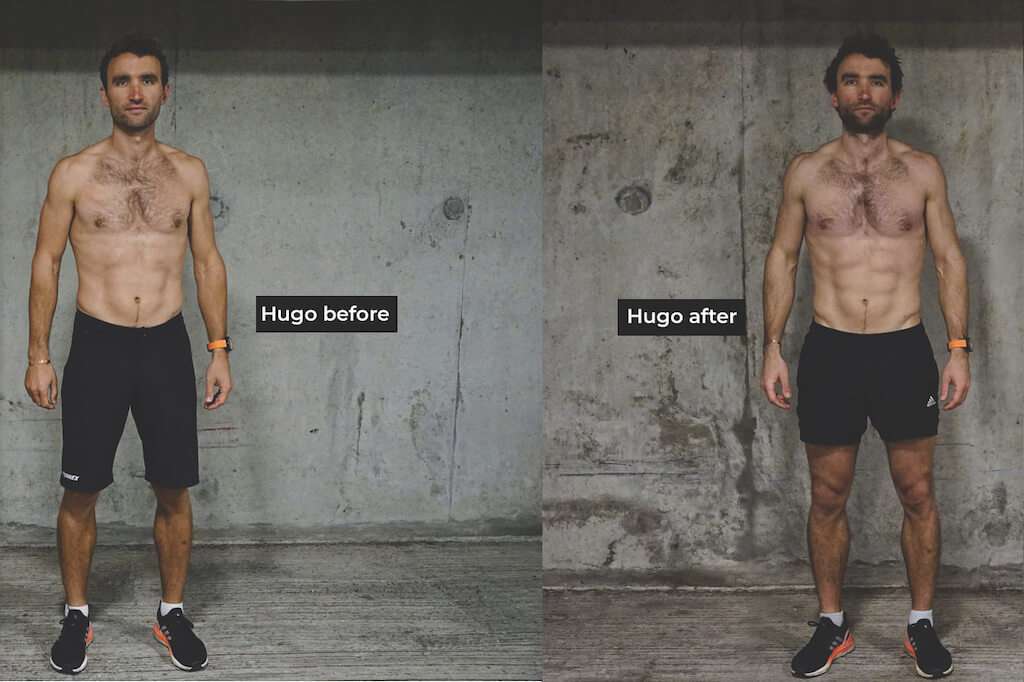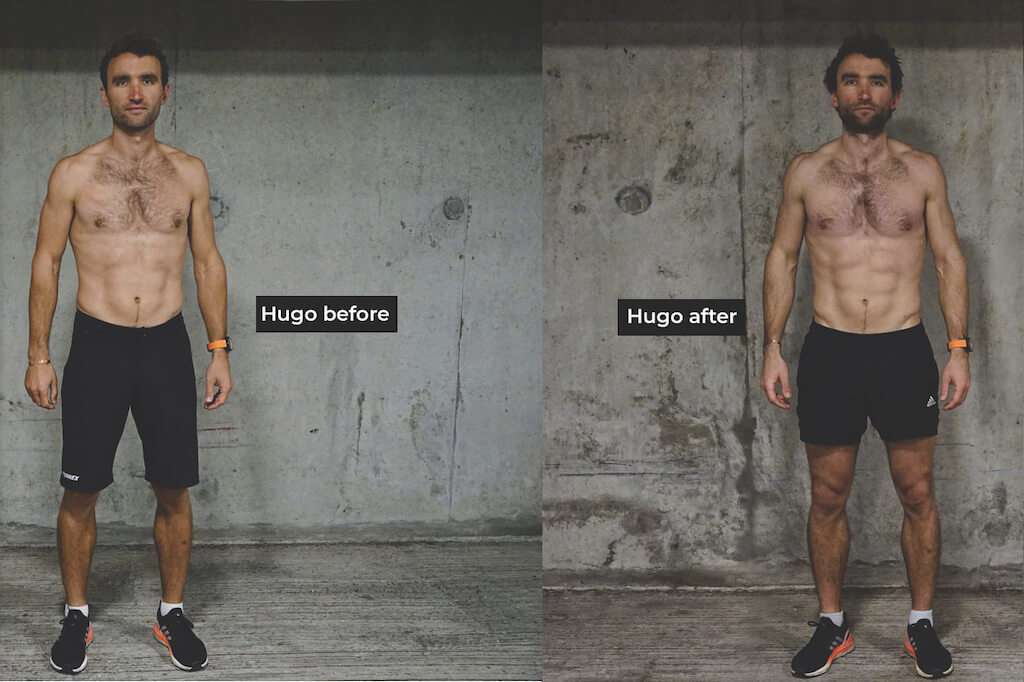So you’re curious, can bodyweight exercises actually help you build muscle mass? Well, the answer might surprise you. Many people believe that you need fancy gym equipment and heavy weights to pack on the muscle, but the truth is, bodyweight exercises can be just as effective, if not more so. From push-ups and squats to planks and lunges, these simple yet challenging movements can help you build strength and sculpt your muscles without the need for any external resistance. So say goodbye to the dumbbells and barbells for a moment, and let’s explore the incredible world of bodyweight exercises and their impact on your muscle mass.
The Benefits of Bodyweight Exercises for Muscle Building
When it comes to building muscle mass, many people immediately think of weightlifting as the primary method. However, bodyweight exercises can be just as effective, if not more so, in helping you achieve your muscle-building goals. Not only are bodyweight exercises convenient and accessible, but they also offer a range of benefits that can support muscle growth.
Increased Muscle Activation
One of the key benefits of bodyweight exercises is their ability to activate multiple muscle groups simultaneously. In traditional weightlifting exercises, you often isolate specific muscles, whereas in bodyweight exercises, you engage multiple muscles to stabilize your body during the movement. This increased muscle activation can lead to better overall muscle development and help you achieve a more balanced physique.
Improved Functional Strength
Another advantage of bodyweight exercises is their focus on functional strength. Functional strength refers to the ability to perform everyday activities and movements with ease. Bodyweight exercises, such as push-ups, squats, and lunges, mimic natural movement patterns and train your muscles to work together harmoniously. This can translate into improved performance in sports, increased agility, and better overall physical function.
Enhanced Joint Flexibility
Bodyweight exercises often involve a greater range of motion compared to traditional weightlifting exercises. This increased range of motion can help improve joint flexibility, allowing for better mobility and reducing the risk of injury. Exercises like deep squats, handstand push-ups, and pistol squats require flexibility in the hips, shoulders, and ankles, and regularly performing these movements can contribute to increased joint flexibility over time.
Greater Balance and Stability
As bodyweight exercises often require you to stabilize your body in various positions, they can significantly improve your balance and stability. Exercises like one-legged squats, planks, and yoga poses challenge your balance and activate the muscles responsible for maintaining stability. By incorporating these exercises into your routine, you can enhance your balance and stability, which has numerous benefits in daily life and athletic performance.
Factors Influencing Muscle Mass Gain
While bodyweight exercises can be effective for muscle building, several factors play a crucial role in determining your success. Understanding these factors can help you optimize your training and maximize your muscle gain potential.
Progressive Overload Principle
The progressive overload principle is the foundation of any muscle-building program, whether using bodyweight exercises or weights. This principle involves gradually increasing the stress on your muscles over time to stimulate muscle growth. With bodyweight exercises, you can achieve progressive overload by modifying the exercises to make them more challenging. For example, you can increase the number of repetitions, perform the exercises slower, or add variations that increase the difficulty.
Training Volume and Intensity
Training volume and intensity are essential factors in muscle mass gain. Volume refers to the total amount of work performed during a training session, while intensity measures the level of effort exerted during each exercise. To promote muscle growth with bodyweight exercises, it’s important to find the right balance between volume and intensity. This could involve performing a higher number of repetitions or incorporating advanced variations that require more strength and control.
Exercise Variation and Selection
To maximize muscle growth with bodyweight exercises, it’s important to include a variety of exercises that target different muscle groups. By targeting specific muscles from various angles and movement patterns, you can ensure balanced development and prevent muscle imbalances. Incorporating exercises like push-ups, pull-ups, squats, lunges, and planks can help you effectively target and stimulate various muscle groups.

The Role of Nutrition in Muscle Building
While exercise is a vital component of muscle building, nutrition plays an equally important role. Proper nutrition fuels your body, provides the necessary building blocks for muscle growth, and supports recovery. To optimize muscle building with bodyweight exercises, it’s essential to pay attention to your dietary habits.
Caloric Surplus and Muscle Growth
To gain muscle mass, you must consume more calories than your body burns, creating a caloric surplus. This surplus provides the energy needed for muscle growth and repair. While bodyweight exercises might not burn as many calories as intense weightlifting sessions, they still require energy. Therefore, adjusting your caloric intake to support your muscle-building goals is crucial.
Adequate Protein Intake
Protein is the building block of muscle tissue and consuming enough protein is paramount for muscle growth. Aim to consume a sufficient amount of high-quality protein sources with each meal. Foods like lean meat, poultry, fish, eggs, dairy products, legumes, and tofu are excellent sources of protein. If you struggle to meet your protein needs through whole foods alone, protein supplements can be a convenient option.
Optimal Nutrient Timing
In addition to overall caloric intake and protein consumption, nutrient timing can also impact muscle building. Consuming a balanced meal or snack containing carbohydrates and protein within the post-workout window can enhance muscle recovery and growth. Aim to consume a post-workout meal or snack within 30 minutes to an hour after your bodyweight workout to replenish energy stores and support muscle repair.
Specific Bodyweight Exercises Targeting Muscle Groups
Bodyweight exercises offer a wide range of options for targeting specific muscle groups. By incorporating a variety of exercises into your routine, you can ensure balanced muscular development. Here are some examples of bodyweight exercises that target specific muscle groups:
Upper Body Exercises
- Push-Ups: Targets the chest, shoulders, and triceps.
- Pull-Ups/Chin-Ups: Target the back and biceps.
- Dips: Target the triceps and chest.
- Handstand Push-Ups: Target the shoulders and triceps.
- Plank Variations: Target the core and upper body muscles.
Lower Body Exercises
- Squats: Target the quadriceps, glutes, and hamstrings.
- Lunges: Target the quadriceps, glutes, and hamstrings.
- Pistol Squats: Target the quadriceps, glutes, and hamstrings.
- Calf Raises: Target the calves.
- Step-Ups: Target the quadriceps and glutes.
Core Exercises
- Planks: Target the entire core, including the abs, obliques, and lower back.
- Mountain Climbers: Target the abs, obliques, and hip flexors.
- Russian Twists: Target the obliques and abs.
- L-Sit: Target the abs and hip flexors.
- Leg Raises: Target the abs and hip flexors.
incorporating a combination of these upper body, lower body, and core exercises into your bodyweight training routine can help you target specific muscle groups for optimal muscle growth and development.

Advanced Techniques to Enhance Muscle Building with Bodyweight Exercises
To continually challenge your muscles and promote muscle growth, incorporating advanced techniques into your bodyweight training routine can be highly effective.
Muscle Building Modifications
To make bodyweight exercises more challenging and stimulate muscle growth, you can modify the exercises by increasing the range of motion, adding explosive movements, or incorporating additional resistance. For example, you can perform deep squats, explosive push-ups, or wear a weighted vest during your workouts to increase the difficulty and engage your muscles further.
Incorporating Plyometrics
Plyometric exercises involve explosive movements that engage the muscles through quick and powerful contractions. Incorporating plyometrics into your bodyweight routine, such as jump squats, box jumps, or clap push-ups, can enhance muscle power and explosiveness.
Superset and Circuit Training
Superset and circuit training involve performing multiple exercises back-to-back with minimal rest in between. By combining different bodyweight exercises into supersets or circuits, you can increase the training volume, intensity, and challenge your muscles in new ways. This can stimulate muscle growth and improve overall strength and endurance.
Isometric Exercises
Isometric exercises involve holding a static position, which recruits and activates multiple muscle groups simultaneously. Adding isometric exercises like planks, wall sits, or static handstands to your routine can further challenge your muscles, promote muscle growth, and enhance overall stability.
Combining Bodyweight Exercises with Weighted Resistance Training
While bodyweight exercises alone can be effective for building muscle, combining them with weighted resistance training can provide additional benefits and further stimulate muscle growth. When combined strategically, these two modalities complement each other and maximize the potential for muscle building.
Benefits of Combining Modalities
Combining bodyweight exercises with weighted resistance training allows you to take advantage of both the benefits of bodyweight exercises, such as increased muscle activation and joint flexibility, and the benefits of weighted resistance exercises, such as progressive overload and targeted muscle stimulation. This combination can lead to more significant muscle gains and improved overall strength and performance.
Implementing Weighted Exercises Into Bodyweight Routine
To incorporate weighted exercises into your bodyweight routine, you can use dumbbells, resistance bands, or weight machines. For example, you can include weighted squats, lunges, or bench presses alongside your bodyweight exercises. By gradually increasing the resistance over time, you can continue to challenge your muscles and promote muscle growth.
Periodization Strategies
Periodization is a training concept that involves dividing your training into different phases, each with a specific focus. By implementing periodization strategies, you can ensure systematic progression and prevent plateaus in muscle growth. For example, you can have a phase dedicated to bodyweight exercises, followed by a phase focused on weighted resistance training. This variation can effectively target different muscle fibers and provide continuous stimulus for muscle growth.

Addressing Common Misconceptions about Bodyweight Exercises and Muscle Building
Despite the numerous benefits of bodyweight exercises for muscle building, several misconceptions persist. It’s essential to address these misconceptions to fully harness the potential of bodyweight training.
Need for External Resistance
One common misconception is that bodyweight exercises lack the necessary intensity for muscle growth because they don’t involve external resistance like weights. However, by manipulating variables like exercise selection, intensity, volume, and modification, you can increase the challenge and intensity of bodyweight exercises to promote muscle growth effectively.
Ignoring Progressive Overload
Another misconception is that bodyweight exercises cannot provide progressive overload, a crucial factor in muscle building. However, as mentioned earlier, you can achieve progressive overload with bodyweight exercises by modifying the exercises, increasing repetitions, slowing down the tempo, or adding variations that challenge your muscles further.
Misunderstanding Muscle Growth Potential
Some people believe that bodyweight exercises are only suitable for building endurance and don’t have the potential to promote significant muscle growth. However, when performed correctly and with progressive overload, bodyweight exercises can stimulate muscle growth similar to traditional weightlifting exercises. Additionally, bodyweight exercises often engage multiple muscles simultaneously, leading to more balanced muscular development.
Case Studies of Successful Muscle Building with Bodyweight Exercises
To showcase the effectiveness of bodyweight exercises for muscle building, let’s look at some real-life case studies of individuals who have achieved impressive muscle growth through bodyweight training.
Athletes and Gymnasts
Many athletes and gymnasts rely heavily on bodyweight exercises to build and maintain muscle mass. Their training often involves a combination of bodyweight exercises and sport-specific movements, emphasizing functional strength, agility, and explosive power. These athletes showcase the potential of bodyweight exercises to develop lean and strong muscle.
Calisthenics Enthusiasts
Calisthenics is a fitness discipline that revolves around bodyweight exercises and advanced bodyweight movements. Calisthenics enthusiasts develop impressive muscular physiques through training routines that consist primarily of bodyweight exercises. By continually progressing and adding variations, these individuals demonstrate the ability of bodyweight exercises to build significant muscle mass.
Transformation Stories
Several personal transformation stories highlight the remarkable muscle-building potential of bodyweight exercises. Individuals who have documented their journeys have experienced substantial muscle gain and transformed their physiques through consistent bodyweight training. These stories serve as inspiration and evidence that bodyweight exercises can genuinely build muscle mass.

Conclusion
In conclusion, bodyweight exercises offer numerous benefits for muscle building and can be a highly effective training modality. Increased muscle activation, improved functional strength, enhanced joint flexibility, and greater balance and stability are just a few of the advantages of bodyweight exercises. By understanding the factors influencing muscle mass gain, incorporating proper nutrition, targeting specific muscle groups, utilizing advanced techniques, and combining bodyweight exercises with weighted resistance training, you can maximize your muscle building potential. Through case studies and personal transformation stories, it becomes evident that bodyweight exercises can indeed build muscle mass. So, whether you’re limited to bodyweight exercises or choose to incorporate them into your weightlifting routine, rest assured that you can achieve significant muscle growth with this versatile and accessible training approach.
